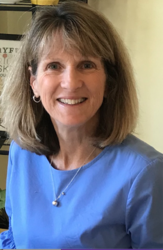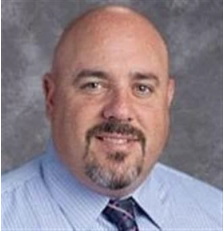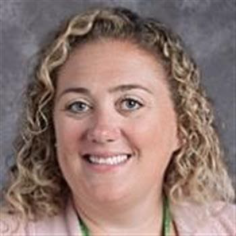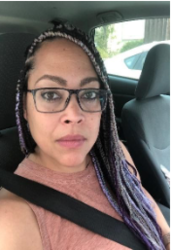Before the pandemic, Sara Buckley, an 8th grade science teacher at Park Middle School in Antioch, California, could handle students who were acting out during class. Understanding that trauma lies beneath disruptive behavior, she didn’t send kids to the principal for punishment. Instead, she’d talk with them to find out what was going on at home or outside of school—and then work out a plan for how to respond differently the next time they were triggered. They could visit the school’s wellness room or take a walk to calm down before returning to class.
Buckley’s response to students was part of an entire culture shift at Park Middle School towards a more supportive approach to students and their problems. Changes included meditation at the beginning of classes, a wellness room that offered counseling, yoga classes, calming music, and a host of tactile objects like squeeze balls to help bring students triggered into “fight, flight or freeze” back into the present. The culture change also spawned teacher and staff healing circles, as well as a buddy system in which teachers who were triggered could reach out to their colleagues to give them a 5-minute break. (Read about the school’s transformation in this story from 2018.)
At the core of this cultural shift, says Buckley, were the deep connections she’d built with students in their day-to-day interactions. But ever since her school transitioned to virtual teaching at the onset of the pandemic, the 23-year veteran teacher says that none of her experience prepared her for the challenges she is now encountering.

“The first day of school, I found myself just staring at a bunch of icons on the screen,” says Buckley, referring to the anonymous image that appears when a student’s camera is turned off. “You're trying to engage and get to know [the students], and it's really, really, really difficult. I'm really off my game, because what works for me with kids is developing those relationships: saying hello when they come into the door, finding things to talk to them about, being interested in their lives. All of a sudden, I'm looking at icons on the screen, trying to figure out how to recreate that relationship.”
Buckley, her fellow teachers, administrators and staff are all testing ways to apply their well-honed trauma-responsive practices to the fallout from the COVID-19 pandemic. Making matters worse, most of the student body and their families were struggling even before the pandemic. 75 percent of students were already eligible for the federal program that provides free and reduced lunches. Some .8 percent of students at Park Middle School are in foster care. And if their parents aren’t among the 14.7 million Californians who have lost jobs during the pandemic, some of the middle school students are left to care for younger siblings or elder family members while their parents work. Since the beginning of the year, attendance has hovered at 94 percent, which represents a 2 percent drop from last fall.
But the challenge of engaging students across digital platforms isn’t just an issue in schools like Buckley’s — it’s rampant everywhere. In response to a question about how serious an obstacle low student engagement is to the effective implementation of distance learning during the COVID-19 pandemic, 47% of 568 teachers surveyed nationally said it was “very serious,” according to a report by the New York City-based Educators for Excellence.

For Park Middle School Principal John Jimno, distance learning obscures issues that would be out in the open in the classroom. “We’re not seeing kids act out in class right now,” he says. “We’re actually seeing kids not talking in class. We’re seeing kids who are logging in, but not doing any of the work, which raises a red flag.”
Counselors have begun reaching out to families through phone calls or home visits when it seems like a kid has gone “missing.” Jimno says that since the beginning of the year, counselors have contacted 25 students and their families weekly compared to 50 interactions weekly during the same period last year. Often the disengagement can be tied to practical problems, he says, such as lack of a computer or working Internet connection. But with COVID and the fallout from that, Jimno says that there’s often more going on.
“My experience with COVID is that it exploits people who are suffering. If you’re already having a hard time at home, and you were involved in interventions at school because of that, you’re probably going to need more help during COVID.”
Many are experiencing challenges with basic needs. For example, the school administration and counselors have identified at least 15 families that need food assistance. And some of those families lack transportation to pick up the food, so staff have delivered it themselves to people’s homes.
The school also has provided students with access to a virtual wellness room, where they can find such things as calming music, live webcams of puppies and yoga classes. It’s also a place where students who may be in crisis can reach out to a counselor for help.
In early October, one encounter illustrated the value of having such a space to connect. “A kid reached out to me who was feeling suicidal,” says Jaime Lefler, a counselor at Park Middle School. It was the first time that the school had to respond virtually to a student in such a grave state that he needed to be taken to the hospital.

“You're on a video with a kid, so you can't really make phone calls. So, I was texting with the vice principal, [Kai Montgomery] I decided the police needed to be called,” recalls Lefler. She, along with Jimno and Montgomery met the police at the house. The student was taken to the hospital. “We wanted to make sure the situation didn’t escalate. I was talking to the mom, and I was with the kid and the police officer. And I think it went pretty well. I mean, it was scary for sure, but I think we have an amazing team.”
While that student was forthcoming, Lefler says that distance learning has created obstacles for building trust. It's not as comfortable as it was for them to just come in and sit on a beanbag chair in our office,” she says. “We're dealing with middle schoolers. And I think that relationship-building with middle schoolers is a struggle in general, because they're still working on social skills. Especially with kids who come from a trauma background, I think they don’t know who to trust. A lot of them have been in foster care, so they don't necessarily trust a social worker or counselor. When you're in a room with them, they just can understand more about your intentions and your personality.”

Despite these difficulties, Montgomery explains that they continue to rely on a trauma-informed approach that’s framed by the question, “What happened to you?” rather than, “What’s wrong with you?” And they often have to do more legwork to answer that question. “Now we have to look at what’s going on in the family, what supports do they need, what services do they need. Do they need computers, hotspots or something else?”
The school counselors just began inviting students to open-format group sessions online as another way to reach them.
Science teacher, Sara Buckley, is also finding workarounds to help her connect with students. “I have 200 students, and I wouldn’t know them by face,” she says. “So, I look at last year’s pictures of them so I can imagine what they look like.”
She also says that she’s spending a lot more time reaching out to students one-on-one and looking in the student’s file to see if there’s a family history of trauma. Recently she had a student who would regularly unmute herself in class and say something obscene before muting herself again. When Buckley finally figured out who it was, she tried to reach her by chat, but the student ignored her. So, Buckley called the girl’s mother.
“That got her attention,” she says, “and she messaged me, ‘Why did you call my mom? Now I’m in trouble!’” Buckley arranged a time to chat by video.
When the student asked why she called her mom, Buckley told her she didn’t like to be ignored. “And then she kind of giggled.” But then they started talking about school, and Buckley could see the pictures on the wall in her bedroom. “And I said, ‘Oh, is that your baby picture?” They talked a bit more, and Buckley eventually asked her about the obscene language in class. The student said she forgot she was unmuted.
Buckley didn’t buy it, but she was more interested in making sure the student was accountable than in calling her out, so she asked her, “Ok, you think you could remember to mute yourself?” Also, she knew the girl’s grades were bad, so she suggested that she give her less homework and check in more regularly, which they’ve since been doing weekly. “She’s a kid who was really troubled last year and has had a lot of trauma in her life,” she explains. “But I’m finding that even online, when you pay a little more attention to them and make them feel special, they respond. I mean it’s amazing. She’s been in class and there haven’t been any more outbursts.”
Jimno agrees. “I really believe that there are a lot of kids who perform because of the relationship they have with their teacher. And I think you can’t discount that at all.”
Buckley recently came up with another way to try to show students that she cares and to get them to engage. She’s forming a study group with some students that will be partly academic and partly a restorative circle. At the first one she’s thinking of asking them what their favorite color is or whether they prefer hamburgers or hot dogs, to get them talking.
Buckley’s interest in finding ways to connect personally are in line with other educators. In a recent webinar entitled, “Preventing Disengagement, Early indicators and Trauma-informed practices,” sponsored by the organization EmoteNow, educator and ACEs Connection staff member Lara Kain also suggested hosting restorative circles as well as taking regular breaks during instruction for movement or breathing exercises to relieve stress and increase focus. Another strategy she likes is something she calls “get-to-know-you” profiles. “Students [are encouraged to] come up with creative ways to do profiles of themselves. It could be Tiktok or a video of themselves. There are all sorts of ways of letting them drive how you get to know them,” she says.
Buckley says she tries to keep in mind that the pandemic has struck everyone’s lives. “It's not only the kids who are traumatized,” she says. “The teachers are traumatized, too. So now you have a traumatized population teaching a traumatized population! And it hurts to not have as deep a relationship with them as you have in person. Maybe we’ll get better at it as time goes on, but I hope it doesn’t go on for too long.”
“We don't know what the impact that this last year has had on our students social and emotional wellbeing and where they’re going to be academically,” says Principal John Jimno, who says it’s not yet clear if they’ll be teaching in person, remotely or a hybrid of the two next semester. But he is clear about one thing. “My effort is focused now on how we’re going to assess [students] emotionally, academically and for any trauma that’s occurred, and provide them with support.”





Comments (1)